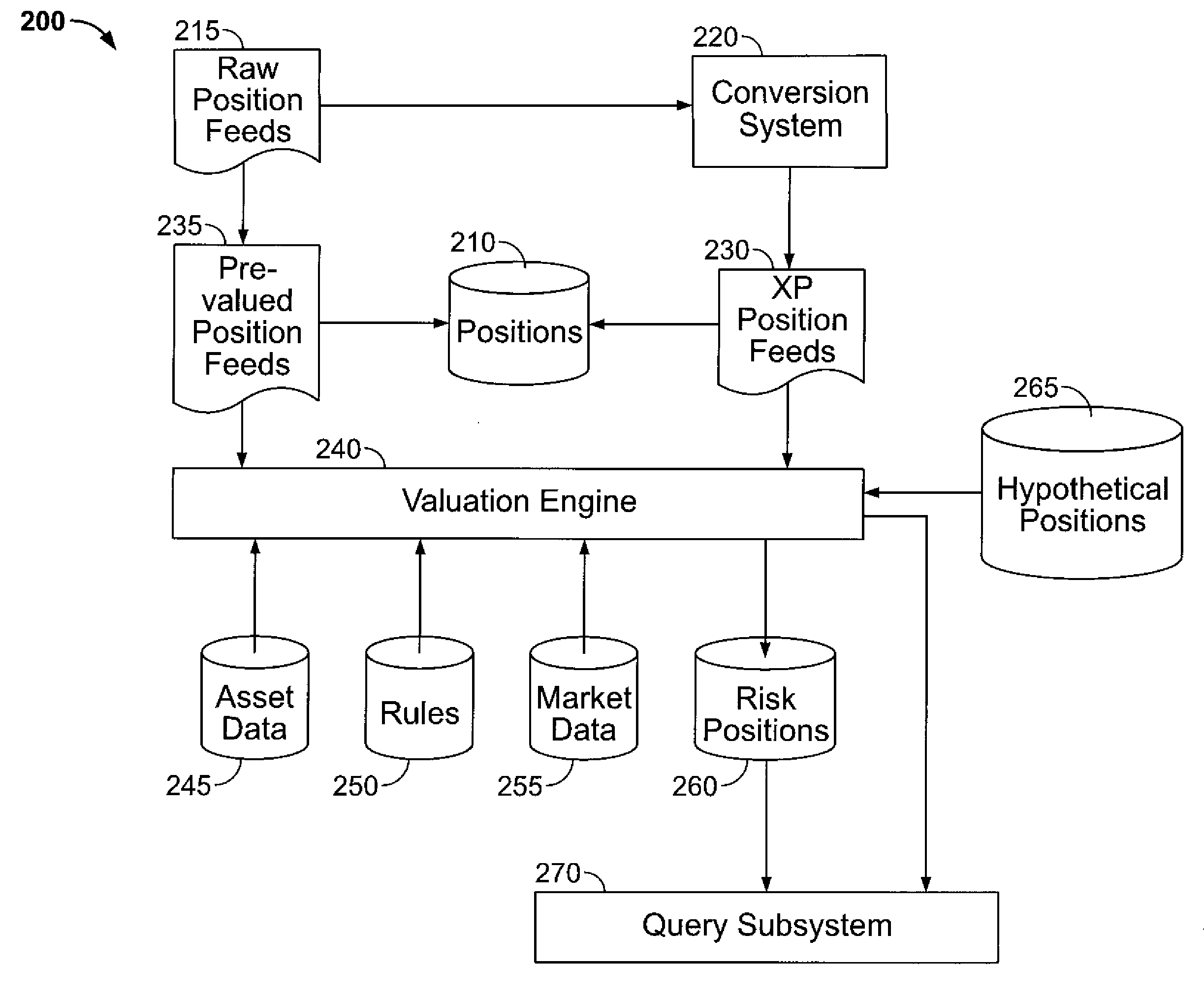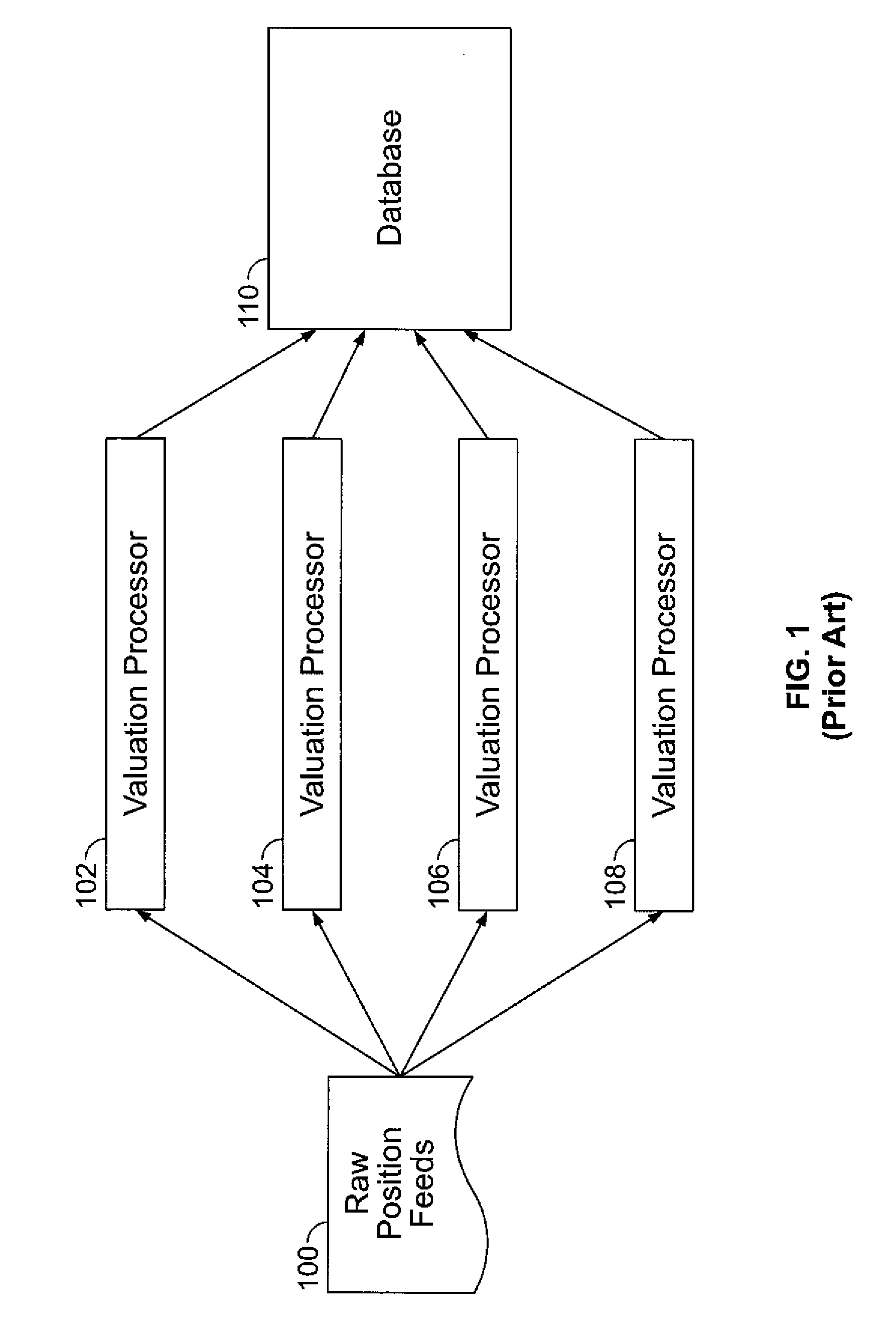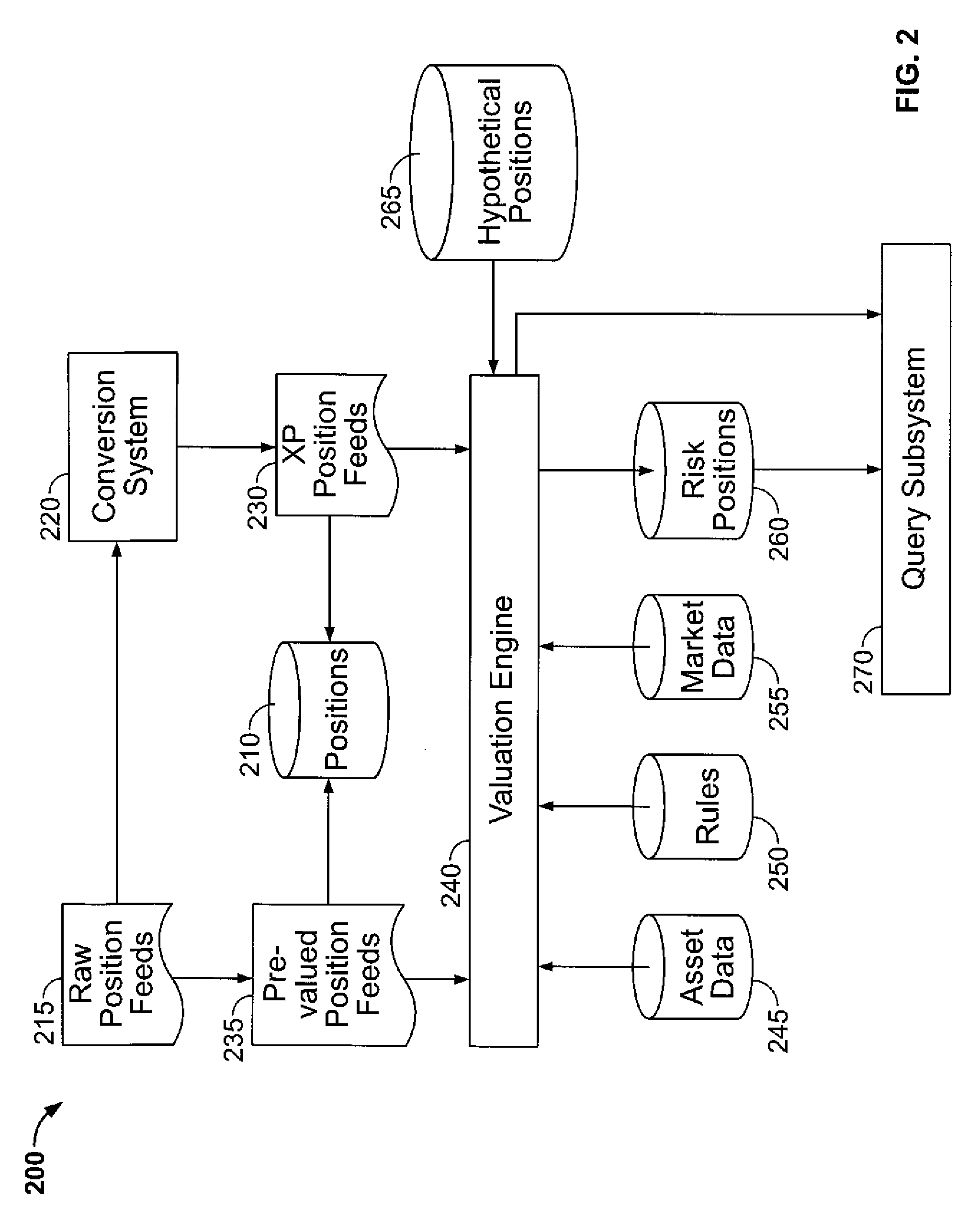System and method for multi-layer risk analysis
a risk analysis and multi-layer technology, applied in the field of risk management analysis systems, can solve the problems of disparate risk engines within, risk engines of either institution not being able to accommodate the risk management processing of the other institution, and inability to keep up with the increasing volume of financial data of growing financial institutions, etc., to achieve the effect of increasing the processing power
- Summary
- Abstract
- Description
- Claims
- Application Information
AI Technical Summary
Benefits of technology
Problems solved by technology
Method used
Image
Examples
example
[0183]The following example shows how the inventive data analysis method for analyzing risk positions, as described above, is applied to the portfolio of positions listed in Table 1.
[0184]The positions in Table 1 are organized as a 2D multi-layered cube with the dimensions Legal Entity and Currency, as schematically shown in FIG. 15. The inner cubes are 1D cubes with the dimension Issuer and two measures: MTM and Exposure. As discussed above, MTM is aggregated by algebraic summation, and Exposure is aggregated by netting for each Issuer separately and then grossing between all Issuers. With this arrangement, cells with inner cubes C1 through C6 in FIG. 15 hold information as shown in Tables 10 through 15, respectively.
TABLE 10CELL WITH INNER CUBE C1Legal EntityCurrencyIssuerMTMExposureFSAUSDGE25020FSAUSDGM45030FSAUSDIBM−500−80
TABLE 11CELL WITH INNER CUBE C2Legal EntityCurrencyIssuerMTMExposureFRBUSDGM−200−20FRBUSDGM15010
TABLE 12CELL WITH INNER CUBE C3Legal EntityCurrencyIssuerMTMExp...
PUM
 Login to View More
Login to View More Abstract
Description
Claims
Application Information
 Login to View More
Login to View More - R&D
- Intellectual Property
- Life Sciences
- Materials
- Tech Scout
- Unparalleled Data Quality
- Higher Quality Content
- 60% Fewer Hallucinations
Browse by: Latest US Patents, China's latest patents, Technical Efficacy Thesaurus, Application Domain, Technology Topic, Popular Technical Reports.
© 2025 PatSnap. All rights reserved.Legal|Privacy policy|Modern Slavery Act Transparency Statement|Sitemap|About US| Contact US: help@patsnap.com



